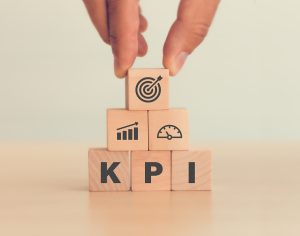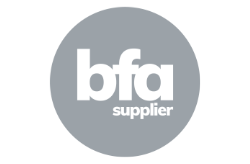Nigel Toplis suggests this is vital at all times, but especially during a financial crisis when most businesses and individuals are adversely affected to some degree.
I had intended to write a feature about ‘lapsed customers’. These are people who, at one time, were regular customers but for some reason or another had ceased to fraternise one or more of my businesses. However, it struck me that having gone through two horrific years because of Covid, it was more important to discuss this topic in a more general sense. So it’s time to return to basics when it comes to knowing and understanding your customers.
Business owners need to understand that external factors are often at play, such as the credit crisis, banking crisis, recession and Covid. We often witness panic when businesses emerge from a crisis. When this happens, people tend to forget the essential mechanics of running a profitable business.
As we come out of Covid, the economy is flirting with stagnation or perhaps even recession. We currently have political turmoil at the heart of Government and, by the end of 2024, we will either have had another General Election or be slap-bang in the middle of a national election campaign.
No two customers are the same. They all require a different approach.
Firstly, we need to determine who our customers are. We need to evaluate their characteristics and, most importantly, know how to maximise their value. Not all business is about instinct. Don’t, for one second, believe that you know your customers – because you don’t. Or you certainly don’t know them well enough.
We all want to be successful entrepreneurs, but we also need to be good mechanics. The most successful businesses are run by those who follow methodology, information and analysis – and not simply by reacting to gut feeling. The starting point is customer segmentation. If you understand which customer category each of your customers slots into, then you are better placed to predict the outcome and be able to maximise their value to your business.
1) Growth Customers (‘Bears’). These are the most valuable to all businesses. This relates to those whose spending, over the last few years, has steadily increased. These are particularly lucrative customers for any business. There may well have been a dip during Covid, but these customers are quicker to resume trading post-crisis than many others.
2) Flash Growth Customers. Certainly good to have, but not necessarily the most reliable source of future income This group generates significantly more turnover than they did previously, but this upturn in business may be inconsistent or short-lived. Always beware flash growth customers. The income they provide is always well received, but they can’t be depended on long term.
3) New Customers. Important but need more attention. Never take your focus off existing customers. Every business wants and needs to attract new customers, but those companies which rely heavily on new customers – rather than established ones – tend to be less effective at maximising turnover. There is always a balance at play. You do need to refill your customer base, but not at the expense of existing customers.
4) Static Customers. Dependable and loyal but they are not necessarily the key for growing your business. This is probably your largest and most tricky category. These are likely to be the bulk of your existing customer base. Their spending is fairly consistent year-on-year and these people are effectively your ‘Labradors’. They are loyal and critical to your business. This group forms the foundation on which to build your business, but they are unlikely to increase their purchasing in the future. You have a choice with ‘Labradors’: Either turn them into ‘Bears’ or develop a strategy that allows you to maintain regular interaction with them but with a minimum effort. This policy is referred to as ‘managed intimacy’.
5) Decline Customers. If several of your top 50-to-100 customers are in decline, then there may be trouble ahead. However, if you can identify the customers that are in decline, you at least have the opportunity to find out why and take appropriate action. It may be as simple as a change of staff personnel, where you lose contact with an influential member of that organisation. They may have departed for pastures new. Therefore, discover who their replacement is and attempt to build a new relationship.
But if the company is struggling, you may need to make a decision on the likelihood of any recovery. Try to offer a friendly ear to the company. It may not stop you from losing business, but could well sow positive seeds for the future, depending on where your contact finds new employment. Whatever the reason, it is critical that you identify new opportunities by stepping-up your marketing effort.
6) Infrequent Customers. They spend little and not very often. This group forms a small segment of your customer base. The most successful businesses have no infrequent customers in their list of top 10-to-20 customers. And when a company has ceased trading, or have moved away or changed direction, then delete them from your database immediately.
Once you’ve categorised your customers, you then need to decide which ones will add greatest value to your business. These customers will require the bulk of your energy and time.
How to determine your Key Customers: Firstly, who are your ‘Growth Customers’? Then ask yourself the following questions, regarding the remainder of your base.
- Is there potential to grow a specific customer by cross-selling, up-selling or selling more of the same?
- Is this potential growth significant and can you put a figure (£) on it?
- If it’s a ‘Decline Customer’, can you halt this decline?
- If it’s a ‘Static’, ‘Infrequent’ or ‘New’ customer, can you develop this account?
If the answer to any of the above questions is ‘No’, then these customers are not the key to your future business success. You will then need to analyse the rest of your database to identify those most likely to become a ‘Key Customer’.
And the following questions should help you identify the right type of customer.
A) Which customers have the most potential to replace your ‘Flash Growth’, ‘Infrequent’, ‘Static and ‘Decline’ customers among those you have not yet identified as ‘key’ accounts?
B) Do you have a good relationship with this customer?
C) Is the relationship capable of development?
D) Has business with them grown during the last 12 months?
E) Does this customer use other suppliers within your industry?
F) Are there multiple buying points within the company?
At the end of this exercise, you will have done five things:
1: Categorised your customers.
2: Identified all ‘key’ customers, existing and new.
3: Recognised ‘Declining Customers’ which you may be able to re-boot via an action plan.
4: Increased your efforts to identify and recruit new customers.
5: Cleansed your database.
You will now have more knowledge about your customers than you did before undertaking this detailed process. You will have a focus on where you need to spend your resources (money, time and energy) going forward.
You will have set the foundations for building the business post-Covid. All businesses are faced with continual change, and will need to constantly adapt. This is the only solution for both survival and growth.
































